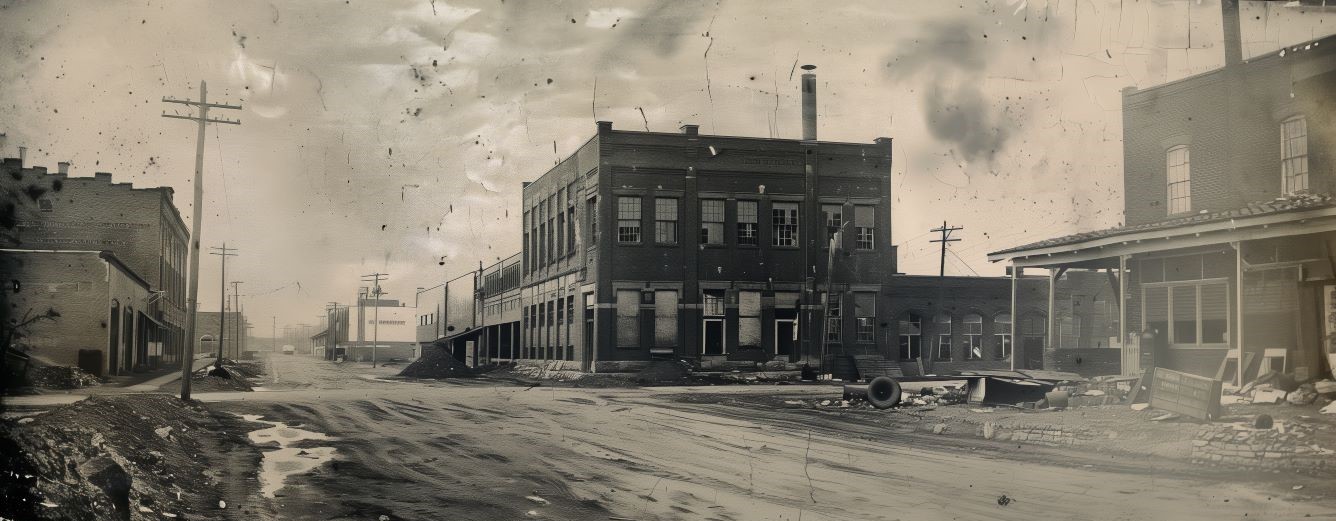Why should we care about the preservation of historic properties?
History gives us a sense of connection with people and things that have shaped, and in fact are still shaping, our world. In short, understanding history gives us a sense of perspective.
For example, say you are hiking in your favorite area and there’s an old house that you haven’t paid much attention to before, but this time you decide to have a closer look at it. It has a plaque out front that describes a little bit about the history of the house, and after reading it, you are momentarily transported to the nineteenth-century when this house was built as a stop along a wagon-trail. You get a feel of the time period and the people who built it by the way the gabled roof is so steep and the materials used appear to be local wood and stone products. The windows are small and few, and you realize how hard it must have been to get window glass to the house as it was being built. You think about the time period in which the house was actively being used, and what it would have been like to live in that time, when this little building along a hiking trail was a major stop along a dusty wagon trail, frequented by travelers moving west in search of a better life. You think about how they might stop for a meal, or for the night, or even just to enjoy a cup of coffee and a little human companionship as they traveled along the dusty trail. You think about the vast distances they’d come and the experiences that the travelers might have had.
Experiencing history in this accessible way offers an opportunity to begin to understand it. Section 106 details the process of preserving these physical reminders of the past. This imaginary property is one that would likely have been either demolished or significantly altered if the Section 106 process had not deemed it worth protecting.
Historic properties protected by the Section 106 process are valuable because they allow for personal engagement with history; they facilitate the possibility for people to experience a bit of the lives that created our present time.
Okay, so what is protected under Section 106?
Section 106 is the portion of the National Historic Preservation Act (NHPA) that concerns federal undertakings. It details the steps that need to be taken to evaluate whether a federal project will either directly or indirectly affect a historic or prehistoric resource or traditional tribal cultural site. (For the remainder of this article, we’re going to refer to all historic and prehistoric resources as well as traditional tribal sites as ‘historic properties.’) Historic properties must be at least 50 years old, can be on public, tribal, military or government-owned properties, and fit into at least one of these qualifying factors:
- They are associated with events that have made a significant contribution to the broad patterns of our history;
- They are associated with the lives of significant persons in our past;
- They embody the distinctive characteristics of a type, period, or method of construction, represent the work of a master, possess high artistic values, or represent a significant and distinguishable entity whose components may lack individual distinction; or
- They have yielded or may be likely to yield, information important in history or prehistory.
How Scout guides your project through the Section 106 process
Keeping historic memories alive is important, and here at Scout we are passionate about balancing your projects with the preservation of historic cultural memory, and by extension, the Section 106 process. We’re here to help preserve and maintain historic resources within your project area and to ensure that your process goes smoothly. Here’s how we do it:
- Thorough Research: The backbone of any project is thorough yet concise research. We begin by focusing on agencies and archives with known documentation before setting out to identify new resources.
- Communication: Good communication is so important to a successful project. This includes email updates of what portions of Section 106 are being worked on, as well as timely replies to all questions, be they via phone calls, email, or — if you’re feeling particularly historically-minded — the U.S. Postal Service.
- Updates on Agency Consultations: We understand how important it is to know what is happening with your project, so we provide regular updates as projects are being reviewed by the State Historic Preservation Office/Tribal Historic Preservation Office and the public.
- Proactive Agency Communication: Section 106 Review takes time and focused documentation, which can leave clients feeling in the dark about their projects. Taking the initiative to let the team know where in the process we are is an important part of proactive communication. Sometimes getting it right the first time means a little more time up front, but it can lead to big-time savings later on.
- Concise, Quality Reporting: Clear reporting on every aspect of the Section 106 process in clear, understandable language helps to simplify the review process.
- Enthusiasm for the Study and Preservation of History: We are passionate about the role history and a historical understanding play in our lives, and guiding our clients through the Section 106 process is one of the best ways we know to encourage and facilitate that historical understanding.
Scout is at the ready to guide you through the Section 106 process. For further inquiries about Section 106 and the preservation of historic properties in your area, please contact me at katie.dumm@scoutenv.com














